COVID certainly taught us a lot when it comes to learning environments and academic performance. Sure, some students did fine in a remote learning setting, and would likely be successful in nearly any learning environment. However, recent test results in Indiana (see graphic below) illustrate academic losses incurred as a result of the pandemic, and the subsequent learning environment changes that were thrust upon us globally in 2019/2020. This chart poignantly illustrates academic performance ‘cliff’ many students suffered through remote learning that became the norm overnight. This graphic also paints the unfortunate picture of the modest gains (and even further losses in some cases) in recent years, even while schools are again fully open.
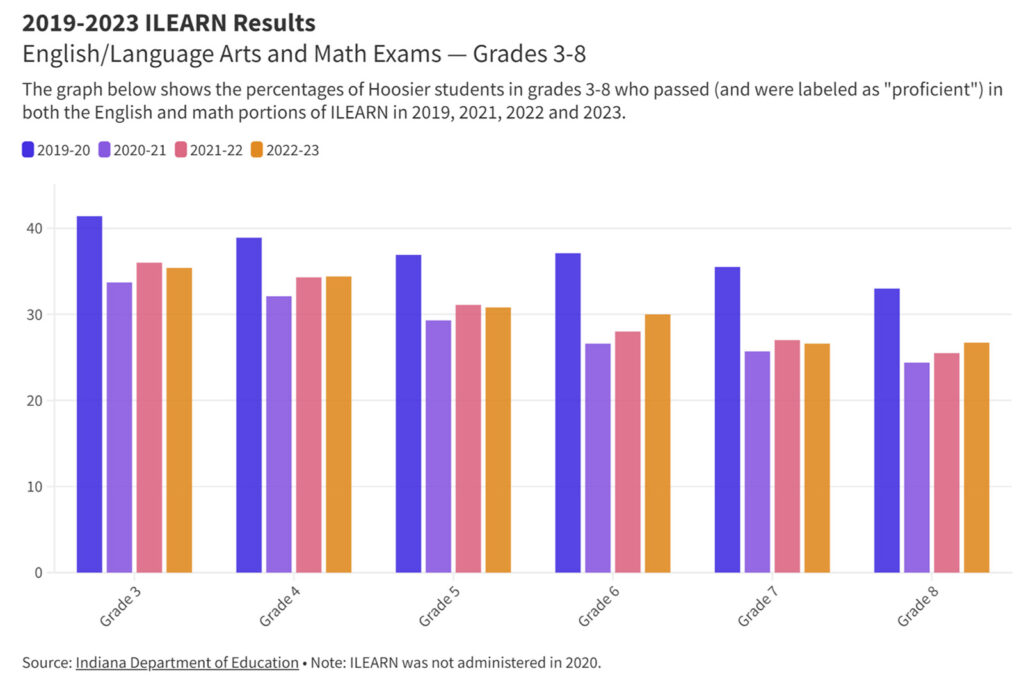
It’s easy to understand the drop in academic performance after the initial rapid onset of COVID, as most schools were unprepared to ‘flip a switch’ in moving to remote learning literally overnight. However, why are students continuing to struggle gaining ground on these academic losses, and are there other elements that should be considered related to getting back to pre-COVID academic test results? Finally, how much does the actual learning environment or student learning space factor into academic performance?
Based on education research analyzed and/or performed by Dr. David Thornburg and presented in his book ‘From the Campfire to the Holodeck: Creating Engaging and Powerful 21st Century Learning Environments’, learning environments (whether in a school setting or at home through remote learning) can be generally categorized within four primary formats or ‘modes’:
- “CAMPFIRE” as Dr. Thornburg describes it, which is the ubiquitous classroom lecture or presentation environment, whereby the learning occurs as a teacher or instructor presents the information, and the learner is primary a passive receiver of information. This first ‘mode’ is the standard classroom we all know, and has remained virtually unchanged for over 100 years: a room of around 900sf with student desks and chairs arranged into forward-facing rows and aisles, with the teacher and presentation board at the front.
- “WATERING HOLE” or small group discussion, where learners engage with each other (and the instructor) in open, organic dialogue of thoughts and ideas, very often taking information they heard during a ‘CAMPFIRE’ presentation and engaging in deeper discussions and interpersonal reflections on the matter.
- “CAVE” which is self-reflection or independent work, where learners process information individually, whether through reading, using an electronic device, or quietly reflecting on discussion.
- “LIFE” or makerspaces, STEM/STEAM labs, etc., where students engage in hands-on active building, prototyping, and application of various learning that perhaps has occurred through the other three modes, whether individually or through a collaborative group. All of these modes can have some touches of ‘blending’ between them.
How much does the actual learning environment factor into academic performance?
The research expands on this, noting many learners will not be successful in any one or two of these environments on their own, but in fact require a blending of all of these modes in a seamless way to truly learn and master a subject. The premise is fairly obvious: to demonstrate mastery of a subject, a learner needs to transition from being a passive absorber of data and information (which is what happens most of the time in a traditional classroom environment) to an active processer and analyzer, to the point where the learner can even explain, teach, and demonstrate the subject matter to others.
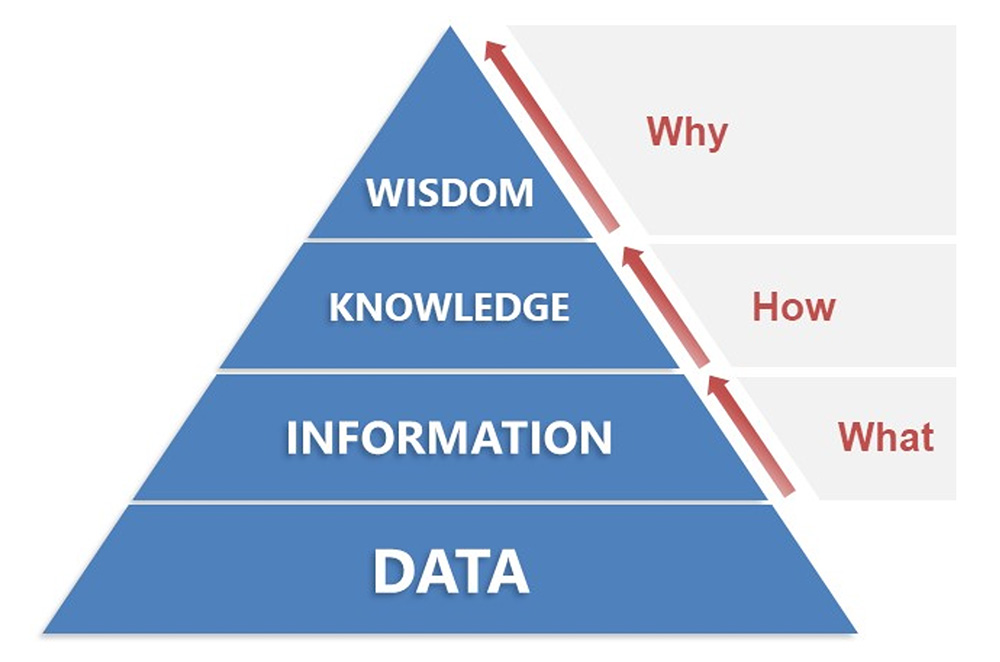
The DIKW hierarchy of learning progressively categorizes learning into four distinct forms:
- Data,
- Information
- Knowledge
- Wisdom
At the lowest levels of learning, Data and Information are simply facts and figures, with nonexistent or limited understanding on how to apply these facts. At the highest levels of learning, Knowledge and Wisdom not only recalls the Data and Information, but has the ability to apply it in a meaningful way to arrive at an anticipated result. Referring back to the four distinct learning environments described by Dr. Thornburg, the four learning categories of the DIKW hierarchy has a natural correspondence to the four learning environments.

The CAMPFIRE or lecture environment is naturally a great way to disseminate data and information, but given the inherent ‘passive’ tendency of this mode it’s hindered in its ability for the learner to prototype, test, and apply information. To successfully move upward in the DIKW hierarchy, a learner needs to be able to apply information in an active way by modeling and prototyping, gaining deeper understanding through an iterative process of experiencing results based on changing inputs. Ideal learning environments to conduct this type of deeper learning are best applied through the learning environment of “LIFE”, certainly with some blending of “WATERING HOLES” and “CAVES”.

Remote learning, as thrust upon us through COVID, showed us how important the learning modes of “WATERING HOLES” and “LIFE” are, especially after they became nearly impossible to exercise, and learning outcomes therefore suffered. Student success rates fell as we were required to lean on the “CAVE” mode, and a dramatically compromised “CAMPFIRE” mode. The good news is, now armed with the data of how combining the full range of learning modes translate to student success we can make deliberate adjustments to achieve higher levels of student success among all learners.
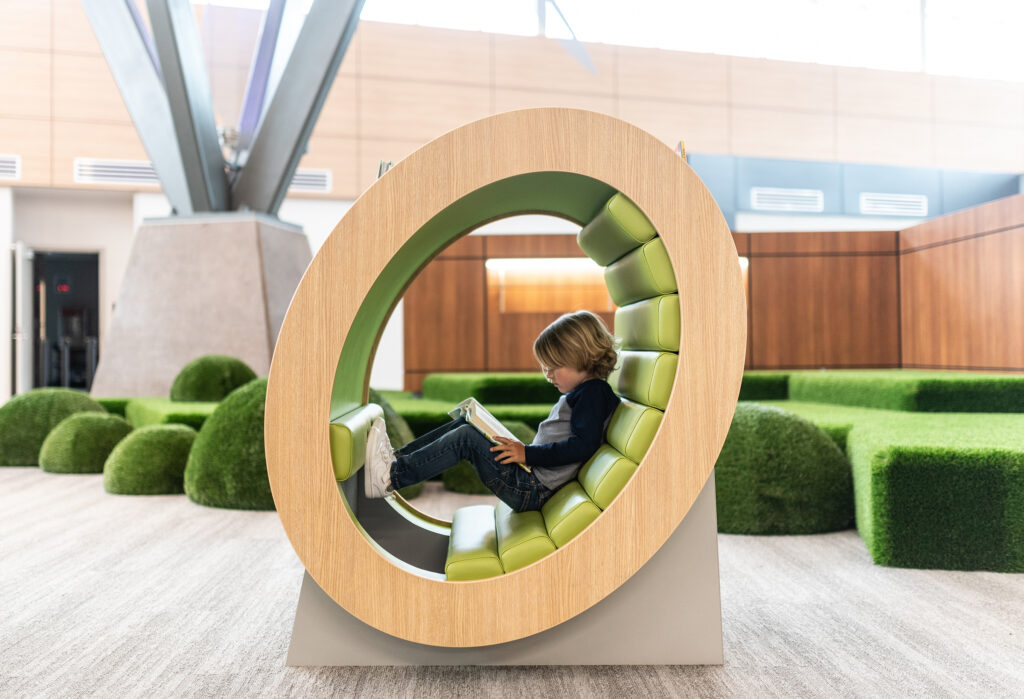
Unfortunately, most schools today were designed with the LECTURE mode established as the primary learning mode. Worse yet, these singularly-focused learning spaces are often a challenge for even the brightest teachers to transition between different learning modes such as LECTURE to WATERING HOLE to LIFE, and therefore either don’t occur, or incredible time and focus is lost in the transitions. Further, due to outdated/uncomfortable furniture, poor acoustics, and distracting / overstimulating walls, and poor lighting, both students and teacher lack the ability to remain focused, comfortable, and ready to learn and be inspired.
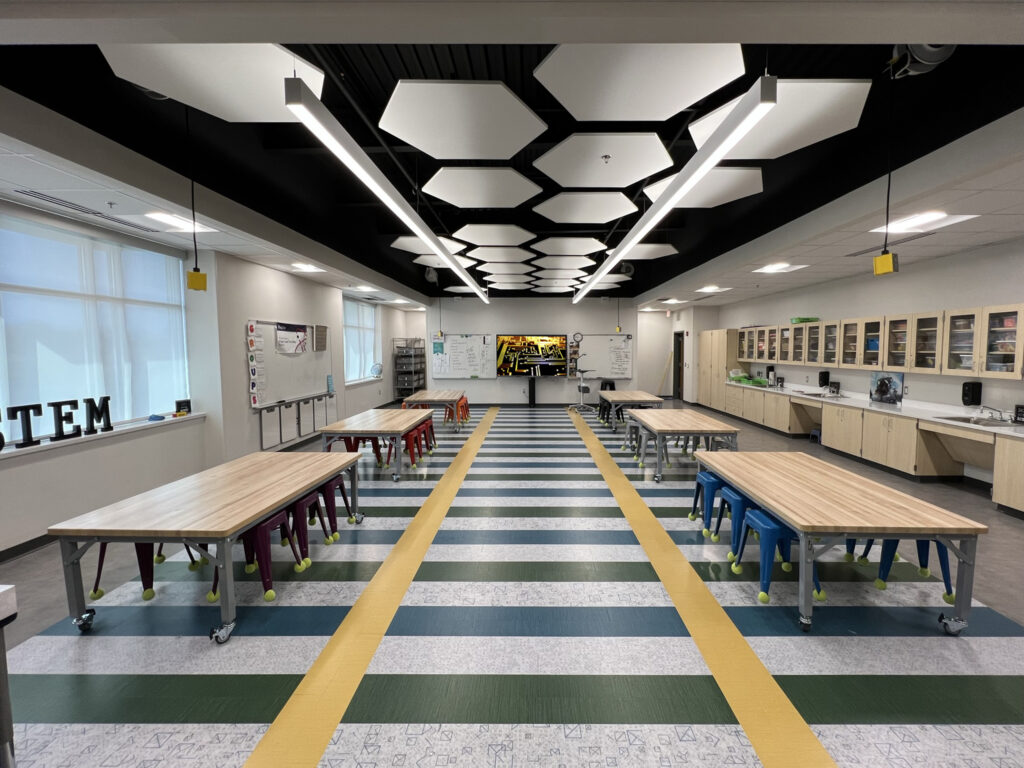
In future-ready, highly-engaging schools, the four learning modes (CAMPFIRE, WATERING HOLE, CAVE, LIFE) would ideally be organized in a way that enables ease of transitions, but also facilitates strong instructor visual supervision between the various modes. For example, classroom spaces should either have internal small group areas, or operable partitions and vision glass to small break out rooms immediately outside the classroom. Interestingly, many schools today already have a ‘microcosm’ of these optimal learning mode transitions modeled within their media centers. Most media centers today can accommodate a class presentation by the teacher, and then seamlessly transition to small group discussion, and then to individual focused reflection, all within decent visual connection of the instructor.
There are certainly a lot of other important factors to be considered within any of these learning modes for achieving maximum impact and the highest levels of academic performance. These factors include natural and artificial lighting (while eliminating glare), user comfort and control of HVAC systems, learner choice and flexibility with furniture and seating options, ‘biophilic’ design elements that connect users to nature, and even the sense of community identity and belonging through purposeful/consistent interior design choices. In the simplest terms, learning spaces should look and feel as though they were designed with the user in mind. This might be conveyed through window sills at ‘kids height’, accessible technology and other amenities, and features such as ‘learning risers’ and ‘spiral success slides’ that establish the tenor and tone of a space, and help a student feel warm, welcome, prepared to learn.
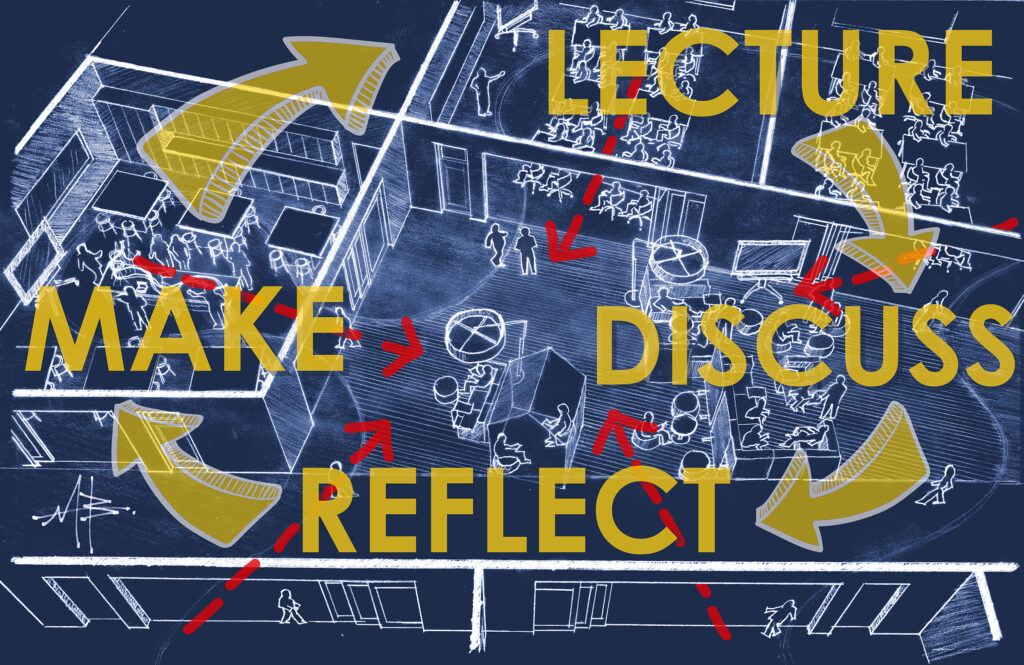
As the recent academic test results have shown, COVID left some lingering negative effects. However, COVID also taught us a lot about the connections between learning environments and effective student engagement. The good news is research is showing how we can positively impact academic performance through rethinking learning spaces, and establishing a new paradigm. Given the dramatic academic losses thrust upon us through COVID, the issue at hand demands more than a one-size-fits-all approach. Every learner possesses a unique set of skills, interests, and learning styles that require a departure from the rigid and ‘traditional’ classroom structures of the past. As we move forward, the goal is to foster learning environments where all students feel empowered, inspired, and actively engaged in their own learning process, and this will occur best by thoughtfully and purposely creating schools (or renovating existing ones) that seamlessly integrate all 4 of the primary learning modes.

